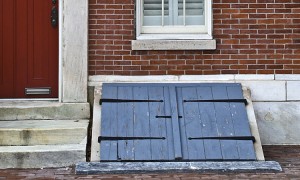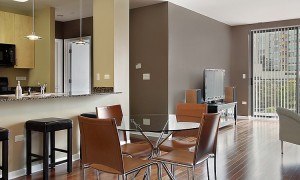Windows are an important and integral part of the design of most homes. They typically comprise thirty to forty percent of the surface area of the building’s principal facade.
Replacing or repairing windows may not be as easy as you think, especially if your home is in an historic neighborhood or you live in a condominium. As residents gear up for spring cleaning and home improvement projects, there are a number of steps that should be taken before any window repairs are made.
But be warned: Multiple layers of government approvals and strict adherence to city and condo board regulations may be required. Fines may also be imposed should you perform work without a permit or are in violation of the scope of your permit.
Condo Owners: Consult Your Condo Docs
If you live in a condominium, be sure to review your condo documents or engage property management before any repairs are made. Some questions to ask:
- Is permission required to replace or repair your windows?
- If yes, is there a review process? Must a written request for consent be submitted?
- How long is the review/approval process and who is involved?
- What guidelines must be followed in terms of material, design, etc.?
- Who pays for replacement?
- Is there a list of window vendors already approved to do work?
Rules are stricter when you live in a condo based in an historic district. You most likely will need to seek permission from both the condo board and from your city’s historic preservation board.
Adhere to Historic Preservation Guidelines
Do you live in an historic neighborhood? Reviews by and permits from your city’s Historic Trust and Historic Preservation Review Board may be required. For example, in Washington, D.C., there is a 20-page book of guidelines and 14 pages of regulations pertaining to windows alone.
D.C. government says: “In making a determination on proposed changes to windows, the Board and staff evaluate the effect of the proposal on the aesthetic values and the historical and architectural significance of the affected historic building. Factors in this evaluation include the architectural style and integrity of the historic building, the design, material, color, and general appearance of the proposed work, and, if applicable, the compatibility with the surrounding historic district or property.”
Familiarize yourself with local government regulations, the review process, and any fees associated with acquiring a permit. In Washington, D.C., the Department of Consumer and Regulatory Affair’s Illegal Constriction Unit imposes a $2,000 fine per infraction for working without a permit and working outside the scope of a permit.
One of my neighbors learned the hard way. Living in an historic townhouse that had been converted into condos, he decided to replace his windows without engaging the condo board or the historic preservation board.
His window installer used non-permitted materials, such as tinted glass and silicone caulk (which couldn’t be painted). As a result, he had to spend more time and money on the repair by securing proper permits and fixing the work that had already been done — all while raising the ire of his neighbors.
Find a Local Window Expert
One of the easiest solutions for repairing windows might be engaging the services of a window installer who is familiar with your neighborhood, building, and any local requirements. They can help navigate and ease the process.
But be aware. Regulations like these don’t apply only to windows. Specific design guidelines may also be in place for porches, steps, landscaping, roofs, and masonry work. Do your homework first!
[cf]skyword_tracking_tag[/cf]






